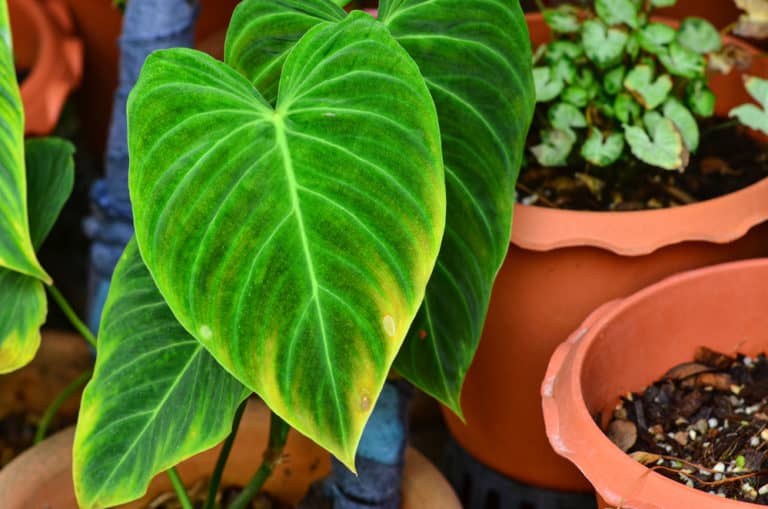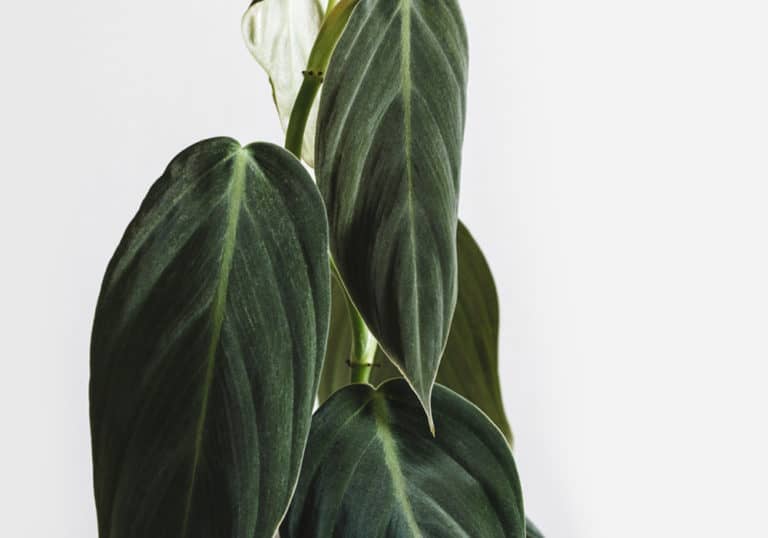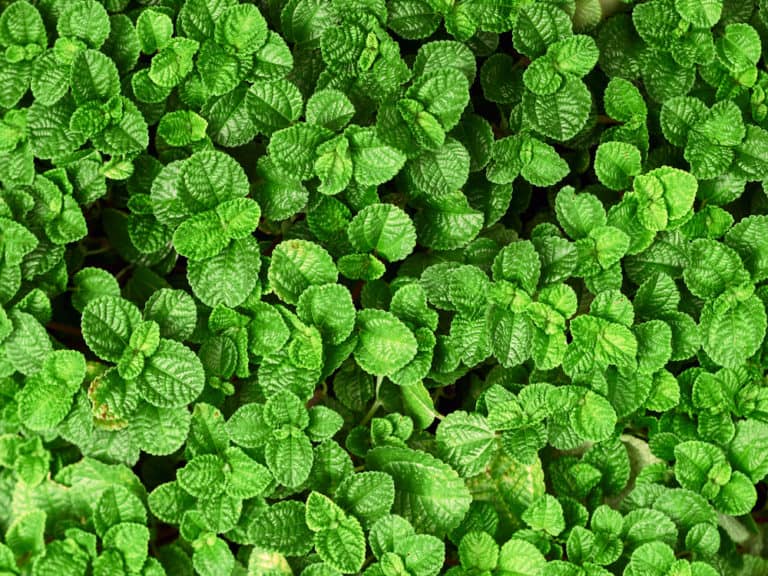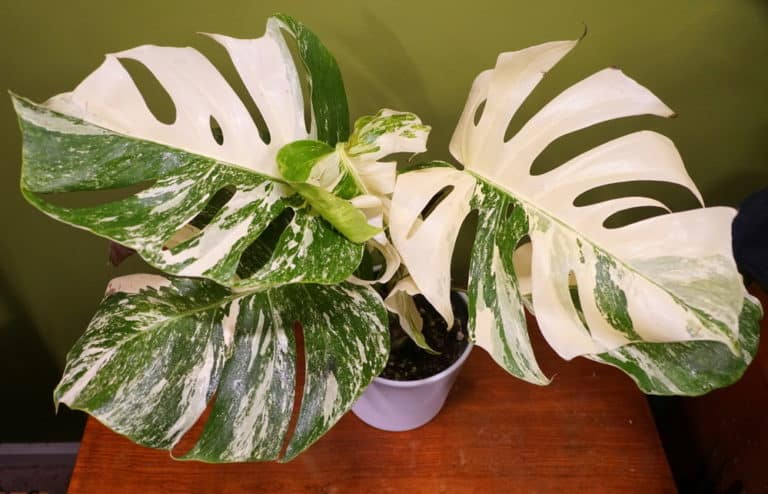Begonia Erythrophylla ‘Beefsteak Begonia’ Care Guide (2024)

Begonia erythrophylla, also known as beefsteak begonia, is a plant that is going to take your breath away immediately, especially if you are a foliage lover. If you also like plants that have some history behind them, then this is the right plant for you.
In general, the plant isn’t hard to take care of; it just needs the right conditions to grow- everyone can enjoy it. You can even have it indoors if you’d like, or outdoors in your garden.
| Scientific Name | Begonia Erythrophylla |
| Common Name | Beefsteak Begonia, Beef Begonia, Kidney Begonia |
| Light | Medium- Bright Indirect Sunlight |
| Watering | Soil needs to stay moist |
| Temperature | Between 7-29°C (45-85 °F) |
| Hardiness Zone | 10,11 |
| Humidity | 50% |
| Soil Type | Well-draining, acidophilic with some orchid bark |
| Soil pH | 6.5-7 (mildly acidic) |
| Fertilizing | Once every 20 days during spring/summer |
| Repotting | Every 2 years |
| Pruning | If needed, towards the beginning of the growing season |
| Propagation | Root ball division, water propagation, leaf cuttings, and stem cuttings |
| Toxicity | Non-toxic for humans, but toxic pets |
| Mature Size | 12-18 inches |
| Bloom Time | Late winter to early spring |
What’s unique about Begonia erythrophylla?
If you ask any plant collector that knows a few things about plants, they will tell you directly that this is indeed a rare plant. The leaves, the flowers, there is something about it, you can’t really put it into words.
This begonia is a hybrid between two rhizomatous (an underground stem that usually has roots) begonias, the Begonia manicata and Begonia hydrocotylifolia.
What does this mean, you might ask. Since this combination was performed in Germany, it likes mild temperatures.
The two parents though, the manicata and hydrocotylifolia are beyond tropical species. The result? A plant that likes and can survive both in mild temperatures, and tropical environments as well.
Begonia erythrophylla Care
Generally, the begonia erythrophylla plant care won’t take too much of your time, since it is relatively easy to sustain it.
The plant needs mostly bright indirect light, especially during spring and summer. During fall and winter, you can let it soak some direct bright light- it will need it anyway. Let’s dive in together in detail to discuss the beefsteak begonia care together!
Light
The erythrophylla variety can handle a variation of conditions since it has hybrid qualities. It can handle full sun and being outdoors. It can also handle partial sun/indirect light, and being indoors.
In the lux language and context, the beefsteak begonia light needs are close to 35,000 lux for medium sunlight and 55,000-60,000 for full light.
You can place your begonia in a bright room that has sunlight from sunrise till noon, if you want to keep it indoors. Personally, I would only suggest you to use grow lights only if it is necessary, and you know that your house doesn’t have too much light during the day- they are a fantastic solution.
If you have planted it outdoors, the begonia erythrophylla light requirements can vary a little bit.
Since too much exposure to full sun can burn the leaves and scorch them, it is best to plant it along with sturdy tall plants. The big foliage will act as an “umbrella” when the sun gets really strong and will prevent the leaf burns.
Watering
In the beginning, pay attention and observe if the plant is really short. If that is indeed the case, the watering needs differ.
You might need to water it more frequently since it has to go through the initial growth phase- water it enough to keep the soil always moist.
Once this phase is complete and the plant seems taller and established, you just need to water it when the soil gets dry.
In the natural habitat, all begonias enjoy a good amount of water, but it needs to drain. If you let the water soak too much, you run the risk of root rot. Keeping this in mind, the begonia erythrophylla watering becomes a simple task.
A pro tip: When you water the beefsteak begonia, make sure to direct the water as closer to the soil as possible; they don’t like it when their leaves get wet. If you can do the bottom watering (simply dipping the pot in a bowl of water) when you have it indoors, the plant will thank you.
Temperature
Begonias are mostly popular for their hardiness. The ideal temperature for beefsteak begonia is between 45-85℉ (7-29℃). It can be quite forgiving as a plant, and it has great temperature tolerance.
If you want to keep the ideal begonia erythrophylla temperature range, you can achieve it by not placing it close to the air conditioner or the heater if you have it indoors.
Air conditioners and heaters have the habit of making the air dry, to the point that it is very hard for the plant to tolerate it.
If you have to use them, you can move the plant away from the room for a little bit, and place it safely somewhere else.
Humidity
Since it is quite hardy, it can handle almost any humidity level. In nature, the Begonia erythrophylla humidity requirements range up to 50%.
If you have the plant placed indoors, you might face the issue of low humidity. There are a few ways to turn this around so you can achieve the ideal humidity for beefsteak begonia.
During the winter, you can keep the begonia in your bathroom. The steam from the hot showers will offer the humidity it needs.
You can also try to group the plants all together so they can share the humidity by the perspiration process.
The classic tip of spraying the plant to increase the humidity, can make the plants happy for a minute or two.The result isn’t permanent though- in order to have steady humidity levels, you can invest in a humidifier.
Soil
Choosing the right soil mix can be quite confusing. All you have to consider is what kind of soil these plants have in nature. Now it becomes easier to choose the right Begonia erythrophylla soil, isn’t it?
The soil for beefsteak begonia should be fluffy, light, airy, and acidophilic. The fluffiness ensures that there is drainage and that the soil doesn’t store too much water in between the waterings. This will further prevent root rot, especially if the plant is young.
The acidophilic quality promotes the high ph level for beefsteak begonia, which needs to be close to 6.5. If you add some orchid bark in the soil mix, you can achieve the ideal ph level of 7 which begonias really love.
Fertilizer
Fertilization is required during the spring and summer months, during the winter you won’t need to worry about it.
There is no specific fertilizer for beefsteak begonia, you can use a general fertilizer with a NPK (nitrogen-phosphorus-potassium) formula.
Since begonias don’t have a large root system, you can dilute the fertilizer ratio to 50% of the recommended dose. You can use the fertilizer for beefsteak begonia once every 2 weeks.
Make sure to dilute the fertilizer carefully, and don’t rush at all if you can. When the fertilizer isn’t diluted correctly, it can cause extreme burns on the plant that you won’t be able to recover.
Potting & Repotting
You will only have to think about Begonia erythrophylla repotting once you begin to notice roots coming out of the pot bottom.
When the time comes, repotting the beefsteak begonia is quite a simple task. You just need to choose a pot that has draining holes since it doesn’t like to sit in water too much.
In regards to the pot size, just remember that you need to select a pot that is just a little bit bigger than the plant. The general rule for the potting is to get a pot that is around twice the size of the pot the plant currently has.
Once you get the plant out of the pot, use your hands and get the roots untangled a bit.
As a start, use some pebbles, perlite and throw in a generous amount of orchid bark. Then add the soil. It will set the ph level from the start, so the plant has a good growth foundation.
Pruning
I am sure you wouldn’t be surprised if you see a leaf or two getting all brown, or fall off. It is part of the natural growth process.
Same goes with Begonia erythrophylla pruning- you don’t have to overdo it, just make sure to trim all the dead leaves, so you can stimulate some new growth.
When you are cutting the beefsteak begonia, the tools you are using need to be sterilized and quite sharp, so it feels like a snap when the leaves are cut.
Propagation
You can propagate beefsteak begonia via different methods.
The most classic one is through water propagation, by cutting a stem. Since the leaves are rhizomatous, you can cut a leaf and place it in soil.
You can also achieve Begonia erythrophylla propagation by root ball division.
Choose the method you like, and make sure you handle the roots gently if you are using the root ball division, and cut the stems gently if you’re using a stem cutting.
Make sure you change the water frequently too.
Also, make sure to check out our in-depth Begonia maculata plant care guide.
Common Problems of Begonia erythrophylla
As with all plants, there are some problems that might arise. The most common problems with beefsteak begonia are bacterial leaf spots, and botrytis blight.
Bacterial spots on leaves
Usually what most people come across. It is one of the famous Begonia erythrophylla problems. The leaves seem to have some black or dark brown dots on the leaves. When the leaves are soaked too much with water, they can become very soft and susceptible to bacteria. They become yellow, and the bacteria will spread around. If you have this issue on your hands, just sterilize your scissors and cut the infected leaves.
Botrytis blight
When humidity levels are way too high and the temperature cold, it can happen. You will see the leaves turn brown, like they are about to fall off, for no specific reason. You will again need to cut the infected leaves, and throw them in a separate bag- they must not come in contact or close to any other plant.
In both situations, what will do wonders for your plants is neem oil. It might smell terribly, but diluted with some water, can make the leaves glow and prevent all these issues.
Pests
There is no way you won’t have some bugs in your beefsteak begonia. It is 100% natural to happen. The most common Begonia erythrophylla pests are aphids and slugs/snails.
Aphids
If you see any white bugs walking all over the leaves, then you have an aphids case on your hands. They are quite easy to deal with, but you need to be persistent. Mix some water, dish soap, and rubbing alcohol. This will make them go away instantly. However, if the infestation is way too big, you might need to visit the local plant nursery for some extra help.
Slugs/Snails
Completely harmless, unless you don’t like the bites they make on your leaves. There are pesticides you can use, but I won’t recommend it. Simply remove the snail or the slug away from the plant, spray some neem oil and you will be more than fine.
Growing problems
If you notice that during spring and summer the plant doesn’t shoot any new leaves, or they begin to grow and then they fall off, the plant might have some growing problems. The growth problems are caused either by pots with no drainage, old soil mix and no recent repotting.
Toxicity of Begonia erythrophylla
Beefsteak begonia can be toxic for humans, mostly because of the sap from the stem and the leaves that can get in the eyes. It is toxic though to pets. Having high calcium concentrates, the leaves, and the sap when swallowed, it can lead to digestive problems, and vomiting.
For Humans
Begonias are on the list of toxic plants, mostly because of the sap they contain inside their leaves and their stems. The calcium concentration inside the plant is known for causing a strong burning sensation when humans and children come into contact with the sap.
Just make sure you are careful when you are pruning the plant, most accidents happen in that process. Using gloves will prevent you from getting sap into your hands or arms, or from touching your eyes. If at any point you come into contact with the sap, make sure to rinse thoroughly with cold water (for the eyes). The burning sensation won’t lead to any serious issues, unless you don’t rinse it at all (for the skin).
For Pets
Begonias can be toxic for pets too. Since plants are really interesting to them, they might be really looking forward to bite the leaves, rub their head on it with force, etc.
You might need to find a high spot, that you know for sure they don’t have a way to reach it. If they bite it, they will surely feel the burning sensation too. Some pets may experience vomiting- it doesn’t happen to every pet.
Others may experience foaming and frothing at the mouth. As an extra tip, you can spread some orange and lemon peels on the top of the soil. The smell of oranges, lemons, grapefruits is really unpleasant to them.
Begonia erythrophylla Appearance
The begonia erythrophylla appearance is quite distinctive. You will see round shaped leaves in a vivid green when the plant is young. As the plant grows, the leaves will turn slightly brownish/ red, and they will be more glossy.
Be careful though not to confuse it with the ‘helix’ variety. The colors are the same, but the leaves are more round and have the red hue only underneath.
Foliage
Circular, looks like small coins. Shiny, with small distinctive light green veins. The foliage of Begonia erythrophylla slightly changes color with age and the leaf hue of red/brown becomes darker as time passes.
It is stunning to watch, and it grabs your attention immediately when you come across it. It can be mistaken for Pilea Peperomioides sometimes- mostly because they share the same leaf shape. The color though is so different, and so are the flowers.
Let’s not forget the shine these leaves have. It almost looks like glitter, or like a mirror. It makes the plant a bit more sensitive to the sun, but it is so worth it!
Flowering
If you’re not a foliage fan, you might not appreciate the plant fully until you see it in full blooming. The Begonia erythrophylla flowering is pink, vibrant and really beautiful.
You will catch these flowers mostly during spring or early winter. If you see the plant from afar, it will seem as if it has a royal pink crown.
The flowers have long stems that hang on top of the plant- like they really want to get your attention. And they make it happen, you can’t miss this beauty even if you wanted to. They usually have two to four petals, closely entangled together, that resemble the bell shape.
Growth
The Beefsteak Begonia has different growth rates in the summer and winter months respectively. During the summer, you will expect the plant to grow rapidly, while during the winter you will notice that the plant remains a bit stagnant.
The full adult size of Begonia erythrophylla is around 12-18 inches. Note also that the plant tends to grow both upwards and sideways as well.
You might need to use stakes to support it, that you can put behind the strongest stems. Since they are a bit sensitive, use soft garden twine. It is rubbery, you can adjust it easily and helps you prevent unwanted accidents.
Begonia erythrophylla Fragrance
Some may say that they don’t smell anything when they come close to the erythrophylla flower. The Begonia erythrophylla fragrance and scent is really mild, and a liveable scent.
You might catch a strong scent the day the bloom has erupted or when the plant has more than one flower. In general, in full adult size you will notice more than one flower on the plant. You can make the scent stronger if you want by making sure the soil pH is high.
You might not find the scent really strong in general, it is really mild, especially in the beginning. For some people it doesn’t smell at all. In full blooming though, you can definitely smell it when you get closer.
Suggested Uses for Begonia erythrophylla
Personally, I have all my begonias indoors. I have them in the living room, because I like their flowers, and they provide a statement in the room.
As a plant collector, having a plant that is special, can be considered as a design element too. If you want to have it in your bedroom as well. All plants can offer air purification, and in this case beefsteak begonia can help you sleep better.
Begonia flowers are also known for the health benefits they have. They are mostly known as ornamental plants, but you can actually consume the flowers. They have great health benefits!
Begonia flower tea is the most common consumption. It can help you with your cold, or with a virus. It rejuvenates the skin, strengthens the teeth and the bones, helps the digestive system and relieves asthma symptoms.
Begonia Varieties
The begonia species is well-known in the plant world for having endless and numerous species and hybrids. The Begonia erythrophylla varieties belong to the “rex” hybrid variety of begonias. The most fascinating thing about all hybrids and varieties, is that they all look different and they don’t look alike.
They even have different foliage, different light requirements and some can handle full sun, some can’t at all. The flowers and the watering habits are the same for all of them though. The rex types and the angel wing types are way different than the types of beefsteak begonia. Let’s compare a few:
Begonia corallina ‘Angel Wing Begonia’
Also known as Begonia Lucerna, this begonia has the same flowers as the erythrophylla one, but the leaves resemble the angel wings, and they have some white spots on them.
Begonia maculata ‘Polka Dot Begonia’
Same as the Lucerna species, the leaves resemble angel wings and they are narrower, but the white dots are way bigger. The flowers have the same shape, but they are white too.
Begonia rex ‘Escargot Begonia’
This rex variety has the leaves that look like the snail shell, thus you can guess why they named it escargot. They have brown and green/grey tones, but the cool thing about the green/grey part is that it shimmers!
Saxifraga stolonifera ‘Strawberry Begonia’
This is the variety that confuses a lot of people. The leaf shape is the same. The colors, and flowers though, they don’t match. The saxifraga variety has a thicker leaf, a vivid red tone and white veins. The flowers are also smaller than the ones the erythrophylla variety has.
Begonia x hybrida ‘Dragon Wing begonia’
Same flowers, but totally different leaves. The Dragon wing begonia has long, semicircular leaves, that differ a lot from the erythrophylla ones.
FAQ
What is Begonia erythrophylla?
Begonia erythrophylla, aka the beefsteak begonia is a hybrid begonia created in Germany and it is now found worldwide.
How do I identify Begonia erythrophylla?
The plant has circular dark brown/olive green leaves, with red hue tones, and light green veins. It also produces pink flowers.
How do I care for Begonia erythrophylla?
Make sure you have some good indirect bright light, water it once the soil is dry and use acidophilic soil to keep the pH levels high.
How to grow Begonia erythrophylla indoors?
Place it in a bright room, and use a pot with drainage holes. Water it modestly, and avoid wetting the leaves.
How to grow Begonia erythrophylla outdoors?
It is best to plant under tall, sturdy plants to prevent it from burning. Use well-drained soil, and plant it next to other begonias too.
How fast does Begonia erythrophylla grow?
During the winter it goes dormant, you can expect it to grow a few inches taller each spring and summer.
How tall does Begonia erythrophylla grow?
The full adult size is 12 to 18 inches. It grows both upwards and sideways.
How do I make Begonia erythrophylla grow faster?
Make sure you have a high pH soil mix, and fertilize it during spring and summer.
How do I stake Begonia erythrophylla?
Use some sturdy stakes around the stems that seem to fall, and use some soft garden twine to tie them carefully.
How do I pot Begonia erythrophylla?
Use a pot with drainage holes, place a few pebbles and some orchid bark. Mix in some well-drained soil and fill the pot till it is full.
How do I revive Begonia erythrophylla?
If the plant has some severe damage, you can cut the severed leaves and let it grow again patiently.
How do I revive Begonia erythrophylla?
This depends on the issue you have on your hands. If it is pests, you can use pesticides, or spray neem oil. Make sure you monitor your watering too. If the soil doesn’t drain, you might need to change it.
Why is my Begonia erythrophylla dying?
It can be pests, bacteria or root rot. Make sure you identify the issue correctly before attempting to solve it.
Why is my Begonia erythrophylla drooping?
It can be droopy because the plant is thirsty. If you notice yellow spots, it might be root rot. Let it dry and monitor your watering schedule from the top.
How much cold can Begonia erythrophylla tolerate?
It can handle up to 7°C (45°F). Anything less than that, the plant will start to suffer.
How do I get rid of pests on Begonia erythrophylla?
You can use rubbing alcohol, mixed with water and some dish soap to avoid most pests. You can also spray neem oil diluted with water. In severe cases of pests, you can use commercial pesticides.
Is Begonia erythrophylla toxic to cats?
Yes, it is. It can cause digestive issues and vomiting when the leaves and stems are bitten and the sap inside is swallowed.
Is Begonia erythrophylla toxic to dogs?
Same with cats, it can cause the same reactions to dogs too.
Is Begonia erythrophylla toxic to children?
The plant is only toxic when the leaves are bitten and swallowed or when sap reaches the eyes; it can cause a burning sensation and redness.
Is Begonia erythrophylla toxic to humans?
Same with children, it can be if the sap is swallowed or if it comes into contact with the eyes and the skin.
Does Begonia erythrophylla have a scent?
Yes it does, but it is really mild. When the plant reaches the adult stage, the scent might get stronger if the plant grows more than one flower.






